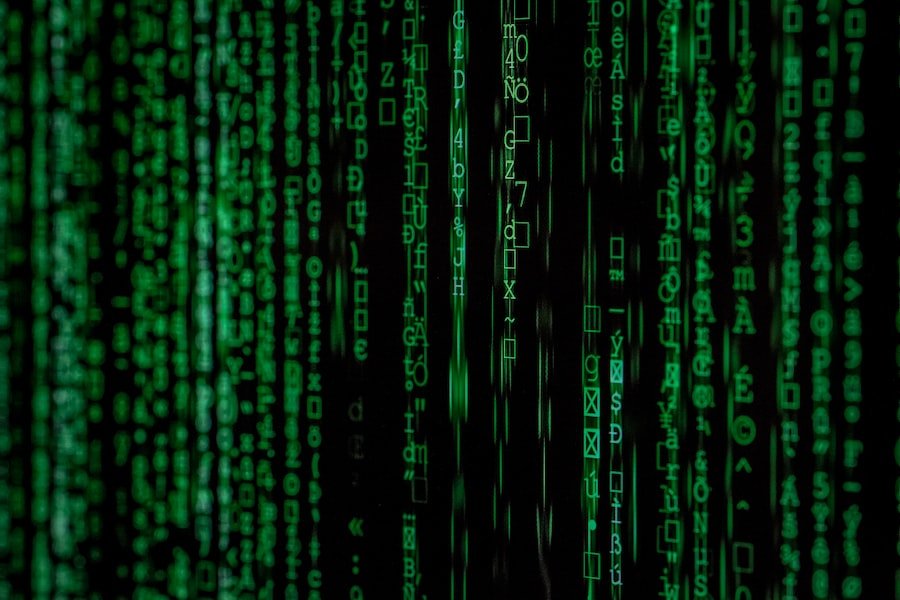

Smartphones and Gadgets: English Tech Terms
In today’s globalized world, English language proficiency has become increasingly important, especially in the tech industry. With the rapid advancement of technology, smartphones and gadgets have become an integral part of our daily lives. Whether it’s communicating with others, accessing information, or staying connected, these devices have revolutionized the way we live and work. However, to fully understand and utilize the features and functionalities of these devices, it is crucial to have a good grasp of the technical terms associated with them.
Understanding technical terms in smartphones and gadgets is essential for several reasons. Firstly, it allows individuals to make informed decisions when purchasing these devices. By understanding the features and specifications, users can choose a device that best suits their needs and preferences. Secondly, it enables users to troubleshoot issues that may arise with their devices. Being familiar with technical terms can help users communicate their problems effectively to customer support or find solutions on their own. Lastly, for professionals working in the tech industry, having a strong command of English tech terms is crucial for effective communication with colleagues and clients.
Table of Contents
ToggleCommon English Vocabulary for Smartphone Features
When it comes to smartphone features, there are several common terms that users should be familiar with. One of the most important features is the camera. The camera allows users to capture photos and videos using their smartphones. It is important to understand terms such as megapixels, which refers to the resolution of the camera sensor, and aperture, which determines the amount of light entering the camera.
Another important feature is GPS (Global Positioning System). GPS enables smartphones to determine their location accurately. Understanding terms such as geotagging, which adds location information to photos or videos taken with a smartphone, can enhance the user experience.
Additionally, Wi-Fi is a crucial feature that allows smartphones to connect to the internet wirelessly. Users should be familiar with terms such as hotspot, which allows the smartphone to act as a wireless access point, and tethering, which enables the smartphone to share its internet connection with other devices.
Technical Terms for Smartphone Hardware and Software
To fully understand smartphones, it is important to be familiar with technical terms related to both hardware and software. On the hardware side, terms such as RAM (Random Access Memory), processor, and battery are essential. RAM refers to the temporary storage space that allows smartphones to run multiple apps simultaneously. The processor, often referred to as the CPU (Central Processing Unit), is responsible for executing instructions and performing calculations. The battery is the power source that keeps the smartphone running.
On the software side, terms such as operating system, firmware, and app updates are important. The operating system is the software that manages the smartphone’s hardware and software resources. Firmware refers to the software embedded in the hardware of the device, such as the camera or display. App updates are regular updates released by app developers to improve functionality, fix bugs, and introduce new features.
English Terminology for Mobile App Functionality
Mobile apps have become an integral part of smartphones and gadgets. Understanding common terms related to mobile app functionality is essential for users to fully utilize these apps. One important term is push notifications, which are messages sent by apps to users’ devices even when the app is not actively being used. In-app purchases refer to additional content or features that can be bought within an app.
User interface (UI) is another important term that refers to the visual elements and controls through which users interact with an app. Terms such as API (Application Programming Interface) and SDK (Software Development Kit) are also crucial for developers. An API allows different software applications to communicate with each other, while an SDK provides tools and resources for developers to build apps.
Backend refers to the server-side of an application or website where data is stored and processed. Understanding terms such as backend, frontend, and database can help users and developers better understand how apps function.
Essential English Phrases for Troubleshooting Smartphone Issues
Despite their advanced technology, smartphones can sometimes encounter issues. Knowing common phrases for troubleshooting can help users effectively communicate their problems and find solutions. For example, if a user’s phone won’t turn on, they can say, “My phone is not powering on.” If the screen is frozen, they can say, “My screen is unresponsive.”
Technical terms such as factory reset, hard reset, and software update are also important to understand when troubleshooting. A factory reset erases all data and settings on the device and restores it to its original state. A hard reset is a more drastic measure that involves completely wiping the device’s memory and reinstalling the operating system. Software updates are regular updates released by smartphone manufacturers to fix bugs, improve performance, and introduce new features.
English Vocabulary for Wearable Technology and Smartwatches

Wearable technology has gained popularity in recent years, with smartwatches being one of the most common devices in this category. Understanding common terms related to wearable technology is essential for users to make the most of these devices. For example, a fitness tracker is a wearable device that monitors physical activity, such as steps taken or calories burned. A heart rate monitor measures the user’s heart rate during physical activity.
Technical terms such as OLED (Organic Light-Emitting Diode), AMOLED (Active-Matrix Organic Light-Emitting Diode), and eSIM (Embedded Subscriber Identity Module) are also important to understand. OLED and AMOLED are display technologies used in smartwatches that provide vibrant colors and deep blacks. eSIM is a SIM card embedded within the smartwatch, eliminating the need for a physical SIM card.
English Terminology for Virtual Reality and Augmented Reality Devices
Virtual reality (VR) and augmented reality (AR) devices have gained popularity in recent years, offering immersive experiences and new ways of interacting with digital content. Understanding common terms related to these devices is essential for users to fully utilize their capabilities. For example, a headset is a device worn on the head that provides a virtual or augmented reality experience. A controller is a handheld device used to interact with virtual or augmented objects.
Technical terms such as FOV (Field of View), latency, and positional tracking are also important to understand. FOV refers to the extent of the observable world that can be seen at any given moment. Latency refers to the delay between an action and its corresponding response in the virtual or augmented environment. Positional tracking allows the device to track the user’s position and movement in physical space.
English Vocabulary for Smart Home Devices and Home Automation
Smart home devices have become increasingly popular, offering convenience, energy efficiency, and enhanced security. Understanding common terms related to smart home devices is essential for users to make the most of these technologies. For example, a smart speaker is a voice-activated device that can play music, answer questions, and control other smart home devices. A thermostat is a device that controls the temperature of a home.
Technical terms such as Zigbee, Z-Wave, and IFTTT (If This Then That) are also important to understand. Zigbee and Z-Wave are wireless communication protocols used in smart home devices to enable connectivity and interoperability. IFTTT is a platform that allows users to create custom automation rules for their smart home devices.
Advanced English Terms for Artificial Intelligence and Machine Learning in Gadgets
Artificial intelligence (AI) and machine learning (ML) have become increasingly prevalent in gadgets, enabling them to perform complex tasks and adapt to user behavior. Understanding advanced terms related to AI and ML is essential for professionals working in the tech industry. For example, natural language processing (NLP) is a branch of AI that enables computers to understand and respond to human language. Computer vision is another branch of AI that allows computers to interpret and understand visual information.
Technical terms such as deep learning, reinforcement learning, and transfer learning are also important to understand. Deep learning is a subset of ML that uses artificial neural networks to model and understand complex patterns. Reinforcement learning is a type of ML where an agent learns to make decisions based on feedback from its environment. Transfer learning is a technique where knowledge learned from one task is applied to another related task.
English Language Course for Tech Professionals in the Smartphone Industry
For tech professionals in the smartphone industry who want to improve their English language skills, there are specialized courses available. These courses are designed to help professionals communicate effectively in English and understand technical terms specific to the industry.
The course content typically includes vocabulary and phrases related to smartphones, gadgets, and the tech industry. Participants will learn how to discuss smartphone features, troubleshoot issues, and communicate with colleagues and clients. The course may also cover topics such as writing professional emails, giving presentations, and participating in meetings.
Enrolling in an English language course for tech professionals in the smartphone industry can provide several benefits. Firstly, it can enhance career prospects by improving communication skills and increasing confidence when interacting with colleagues and clients. Secondly, it can improve productivity by enabling professionals to understand technical terms and instructions more effectively. Lastly, it can foster a global mindset by promoting cross-cultural understanding and communication.
To enroll in an English language course for tech professionals in the smartphone industry, individuals can contact language schools or institutions that offer specialized courses for professionals. Online platforms may also offer courses specifically tailored to the needs of tech professionals. It is important to choose a course that aligns with individual goals and preferences, ensuring a personalized learning experience.
If you’re interested in expanding your tech vocabulary, you might also want to check out this article on “Norwegian Vocabulary for Tech and Internet Use.” It covers essential terms and phrases related to smartphones, gadgets, and online activities. From discussing the latest smartphone features to understanding internet terminology, this article will help you navigate the digital world in Norwegian. So, whether you’re a tech enthusiast or simply looking to improve your language skills, this article is a must-read. Read more
FAQs
What are some common English tech terms related to smartphones and gadgets?
Some common English tech terms related to smartphones and gadgets include Bluetooth, Wi-Fi, GPS, NFC, OLED, LCD, RAM, and ROM.
What is Bluetooth?
Bluetooth is a wireless technology that allows devices to communicate with each other over short distances. It is commonly used for connecting smartphones to headphones, speakers, and other devices.
What is Wi-Fi?
Wi-Fi is a wireless networking technology that allows devices to connect to the internet or other devices without the need for cables. It is commonly used for connecting smartphones, laptops, and other devices to the internet.
What is GPS?
GPS stands for Global Positioning System, which is a satellite-based navigation system that allows devices to determine their location and provide directions.
What is NFC?
NFC stands for Near Field Communication, which is a wireless technology that allows devices to communicate with each other over short distances. It is commonly used for mobile payments and sharing files between smartphones.
What is OLED?
OLED stands for Organic Light Emitting Diode, which is a type of display technology used in smartphones and other devices. OLED displays offer better contrast and color accuracy compared to traditional LCD displays.
What is LCD?
LCD stands for Liquid Crystal Display, which is a type of display technology used in smartphones and other devices. LCD displays use a backlight to illuminate the screen and offer good color accuracy.
What is RAM?
RAM stands for Random Access Memory, which is a type of computer memory used in smartphones and other devices. RAM is used to temporarily store data and programs that are currently in use.
What is ROM?
ROM stands for Read-Only Memory, which is a type of computer memory used in smartphones and other devices. ROM is used to store permanent data and programs that cannot be changed by the user.
If you want to learn Norwegian, you can register for classes here. We look forward to hearing from you and helping you become fluent in Norwegian.






